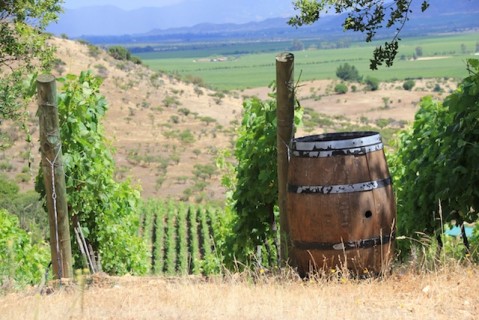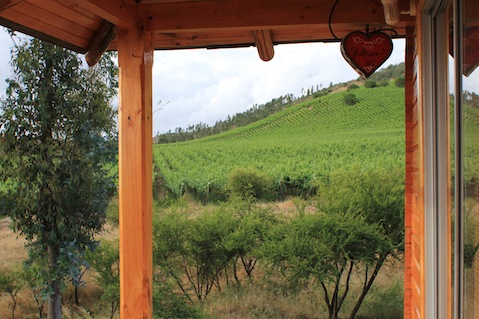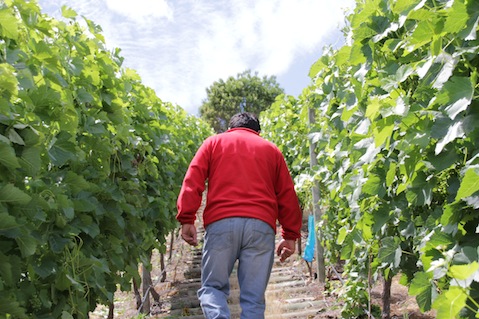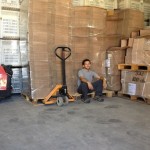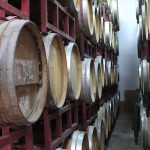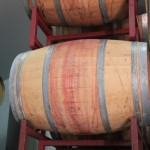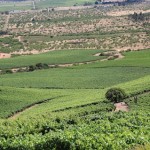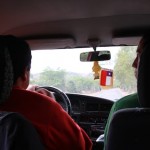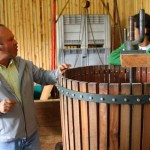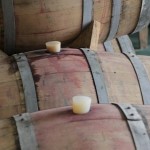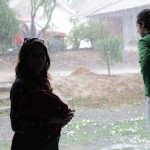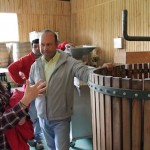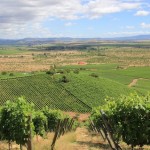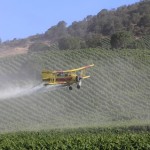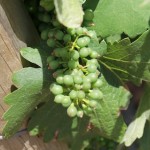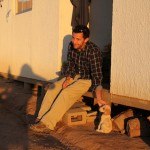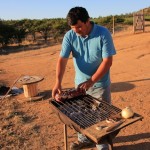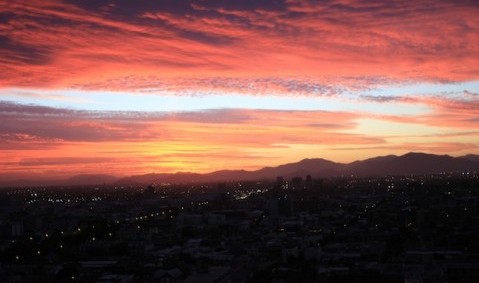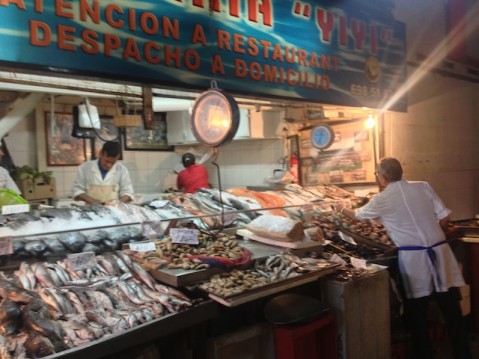It’s hard to put in to words what a special experience we had at the Polkura vineyard. We were incredibly lucky to have been invited here by the owner; a coworker and friend of our good friend Nathan. Without ever meeting us, he invited us to stay in a cabin in the middle of the vineyard. We drove in late at night in a teeny rental car and a rainstorm, so the first morning’s view of vine-striped hills was more than we expected.
Polkura is a small vineyard, located in Marchihüe, part of the Colchagua Valley, which specializes in delicious Syrah. The owners Sven and Gonzalo care deeply about the environment on which they are situated, as well as the process by which they create their wine. (Check out Movi, a collective of small growers and vintners).
The assistant wine maker, Claudio, and Christian, the grounds manager, graciously taught us about every aspect of wine making. We saw the incredible detail that goes in to each bottle of Polkura, from the soil and weather conditions, to the type of cork that is used, the age and origin of the barrels and innumerable chemical steps we didn’t entirely comprehend. We helped put stickers on bottles and pack cases for an order being shipped to Brazil, and even spent an afternoon helping tend to the vines.
We were able to taste Polkura’s varieties in each stage: with a siphon from an oak barrel, a nozzle straight out of the tank, and, of course, we drank a bottle or three. Claudio and Christian took us to visit a local grape grower who had recently started making his own wine in small batches, entirely by hand. He showed us the old-style mechanical crank he uses to squish the grapes, and explained how he bottles it all alone (a pulley to lift the barrel, and a funnel to pour it in). His cabernet went down well at 1:00 pm and provided the right amount of fuel for an indulgent afternoon nap.
The Colchagua Valley is home to some of Chile’s most famous vineyards including Concha y Toro and Montes, which you’ve probably had in the States. Vineyard stays and expensive afternoon tours make up the tourism industry there, but we decided to skip the pre-packaged, behind-the-glass introduction after we had such an up-close and personal one.
Aside from our personal Winemaking 101, we were treated like part of the Polkura family. Christian invited us to dinner with his family where he grilled a generous variety of steak, pork, and Eric’s new favorite “Choripan.” We shared the cabin, and a lot of wine, with Claudio, who told us a little more about life in Chile, running a vineyard, and his dream to one day have his own. We were honored to be included in all of this, and can only hope to show some of the Polkura folks a little hospitality in our home some day.
Here’s where we were:
(Polkura Vineyard, Marchigüe, Chile)

